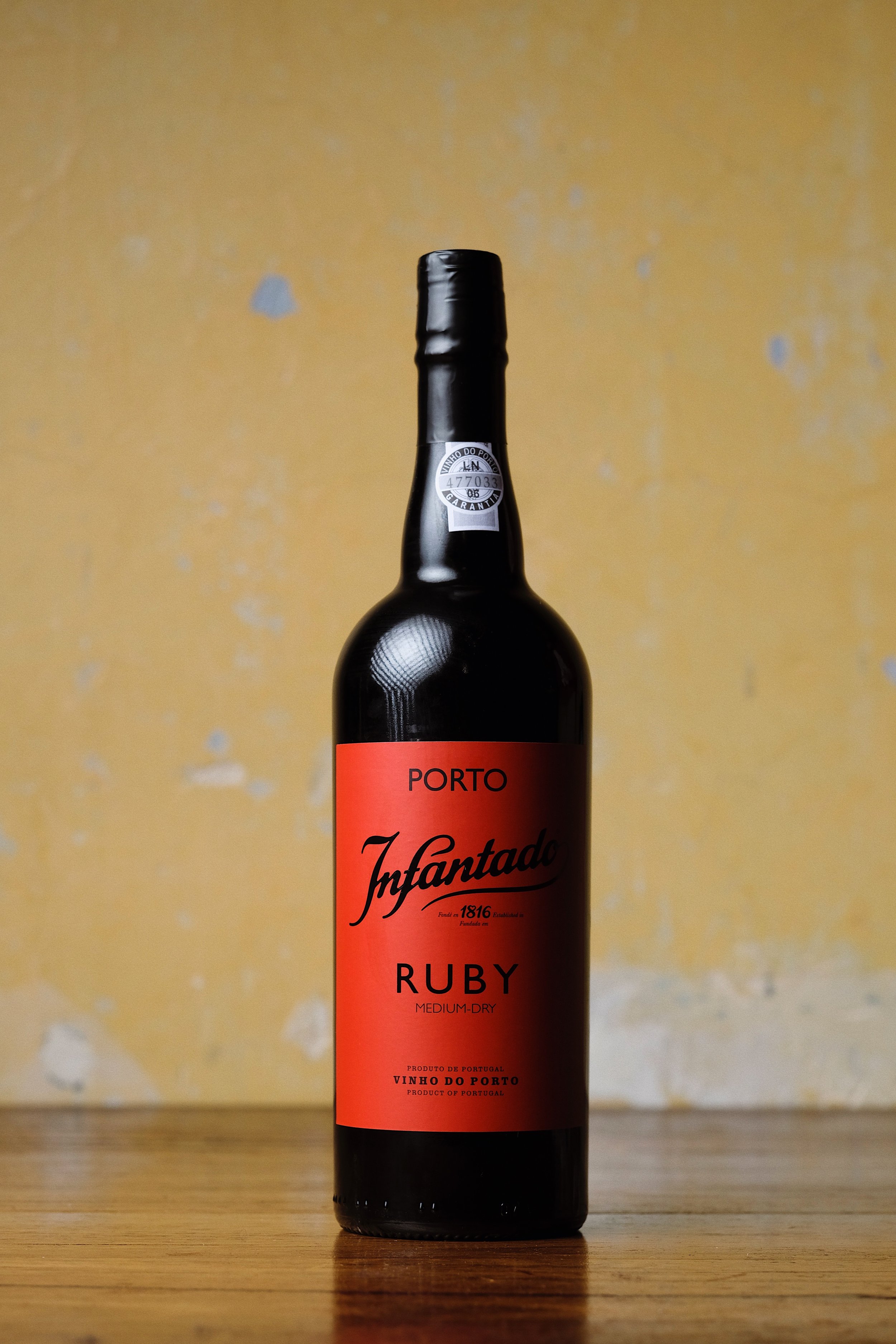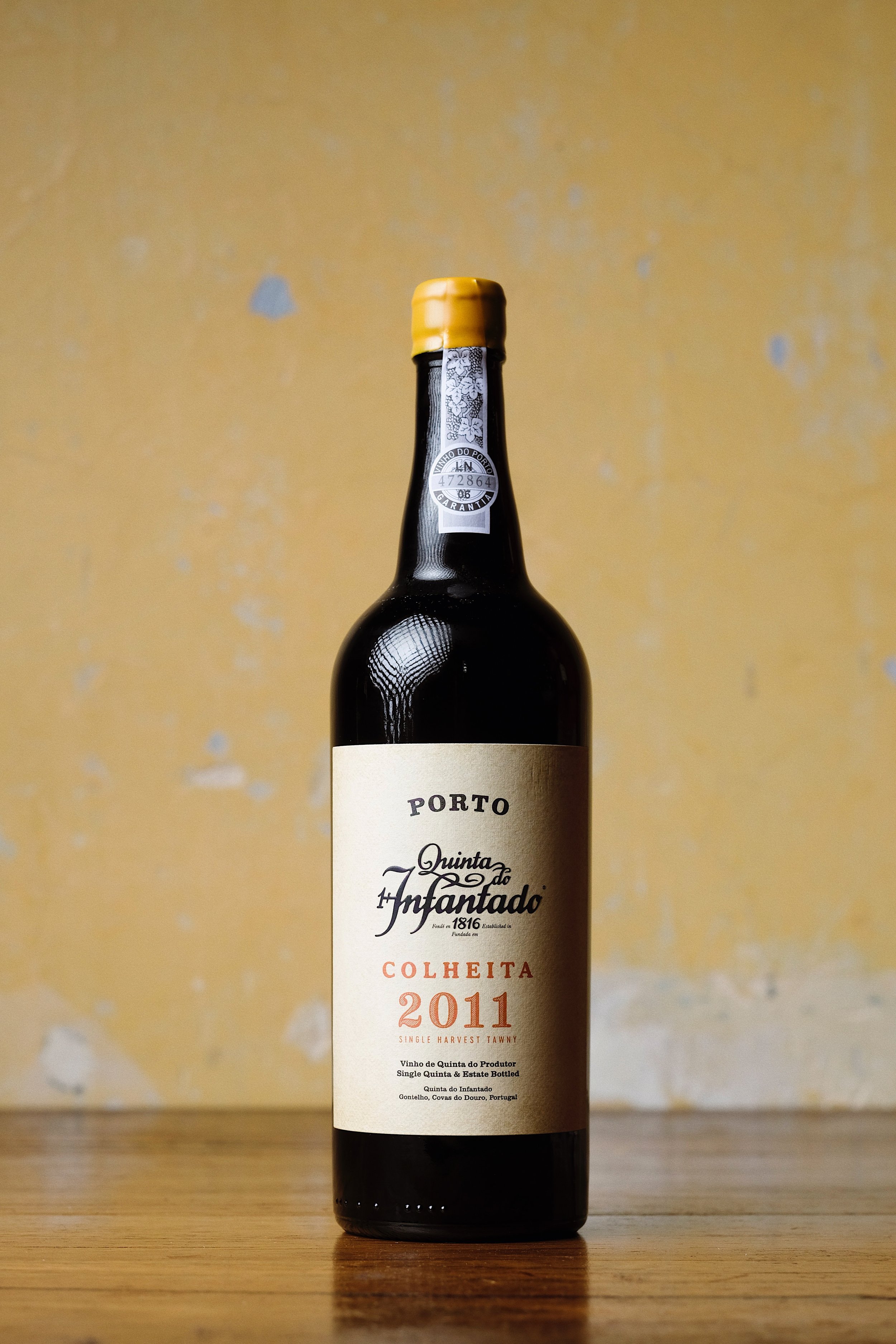Quinta do Infantado
João, Álvaro & the Roseira Clan
Pinhao (Douro)
Quinta do Infantado has existed since 1816, when it was founded and named for Infante D. Pedro, the crown prince and future king of both Brazil and Portugal. It has been with its current custodians, the Roseira family, since 1904. Despite its grandiose beginnings, the Roseira’s are salt-of-the-earth vineryons for sure.
Quinta do Infantado have always done things a little differently. Since the Roseira family took over they have been known for their Medio-seco styles of Port i.e significantly dryer than other producers. This is a result of the family allowing longer fermentation times (always with wild yeast) before fortification, reducing residual sugars, lowering the amount of alcohol needed to fortify, and leading to a far more vinous, gastronomic and dryer drinking experience than other ports. Their ports tend to have around 30% less fortification brandy and are often 50 grams per litre dryer than their contemporaries.
Having long desired to do so, the Roseira’s were the first to estate bottle Port as soon as it was permitted in 1979, breaking the hegemony and monopoly of the large port shippers in Vila Nova de Gaia.
Another thing that sets Infantado apart is the quality of their vineyards. Douro (as you so often hear when visiting) was the first demarcated wine region in the world, which when combined with being such a unique and historically significant wine style, has led to some pretty intense regulation. Vineyards are officially ranked from A-F in the benefício system by a centralised body the Instituto dos Vinhos do Douro e do Porto (IVDP). Infantado owns only A-classification vineyards, which is the equivalent of a Burgundy producer only working with Grand Cru sites.
Based just outside of Pinhao, in the Cima Corgo sub-region, the Roseira family tend to their 46 hectares and 20+ varieties with the utmost care. They always farm sustainably, with one-third of their vineyards being certified organic, comfortably the most of any producer in Douro, with more in conversion.
Those 20+ varieties are mostly red but some whites are often co-planted. Replantings and new vineyards are carefully massale selected and always have been, equaling, a quite staggering array of clonal material. The quite frankly insane landscape of the Douro Valley and its steep schist terraces means that the exposure, altitude and microclimates available are mind-boggling numerous, which leads to a level of complexity that needs to be tasted to be believed when handled judiciously in the winery.
Most ports are made from a seriously mixed bag of very late-picked and raised fruit of mixed origin, which are then hastily fortified with lots of poor-quality distillate. This renders the final product fiery, sweet, and a bit meh. Infantado’s insane quality of fruit, their meticulous vineyard care, dedication to medio-secco style and early picking for natural acidity makes for a seriously delicious, terroir-driven, fresh and vinous lineup of fortifieds.
Infantado also make table wine. Wines are classically structured and extremely complex, but have quite an astounding level of freshness compared to their contemporaries, being a very welcome addition to their lineup, rather than a polite chore to suffer through as with most Port houses.
-
A Port house with a proud tradition of crafting amazing medio-seco ports that are the most vinous and gastronomic going. Regional leaders in organic farming.
-
Country: Portugal
Region: Douro
Sub-Region: Cima Corgo
Village: Pinhão -
Soil Types: Schist
Size: 46ha
Farming: Sustainable, 33% Organic (certified)
Varietals: Arinto, Fernão Pires, Sauvignon Blanc, Touriga Nacional, Fernão Pires, Tinta Barocca, Castelão, Syrah
Current Releases
Infantado Douro Tinto
Touriga Franca, Tinta Roriz & Touriga Nacional, 2016
A blend of Touriga Franca, Tinta Roriz, and Touriga Nacional from the Pousado vineyard, the newest addition to the Infantado stable.
Planted in 1998, specifically to be farmed organically and provide fruit with naturally high acidity, it was chosen for its high altitude, North/Northeast exposure and proximity to the moderating effects of the Covas River.
Grapes were partially de-stemmed before fermentation with native yeasts in lagar. Sees 8-month elevage in tank before spending 16 months in 300-litre french oak barrels, none of it new.
Unfined, unfiltered, small amount of sulphur (30ppm) added at bottling.
Roseria Red
Touriga Nacional, Touriga Franca +, 2013
Touriga Nacional, Touriga Franca and a small amount of many more classic Douro varieties.
All Estate fruit from the families exclusively A-class vineyards.
Partly de-stemmed fruit is fermented with native yeasts in lagar.
Aged seven months in stainless steel tanks and then twenty months in 300-litre French oak barrels (with a portion of new oak).
White (Port)
Blend, NV
A white field blend of mainly Gouvejo, Rabigato, Viosinho and Moscatel made from the families exclusively Class A parcels (Pousado, Vale de Moinhos, Serra de Cotas). Fruit is sourced these from sites that promote acidity retention.
Hand-harvested, fermented with ambient yeast, partial whole bunch, in lagar.
Spends 1-2 years on average ageing in a combination of huge very old wooden barrels from 3000-60,000L and classic port pipas (550L) to allow for very slow and gentle and more accelerated oxidation respectively to increase complexity without sacrificing primary freshness.
30gpl residual sugar rendering it “dry” in port terms. 3-4 year bottle age prior to release.
Ruby (Port)
Blend, NV
Blend of Touriga Franca, Tinta Roriz, Touriga Nacional and a few more besides. Fruit sources from the family's Class A parcels in Serra Douro, Lapa and Castelos.
Hand-harvested, fermented with ambient yeast, partial whole bunch, in lagar.
Spends 1-2 years on average ageing in a combination of huge very old wooden barrels from 3000-60,000L and classic port pipas (550L) to allow for very slow and gentle and more accelerated oxidation respectively to increase complexity without sacrificing primary freshness.
70gpl residual sugar, roughly 30 less than most contemporaries, making for a much drier and vinous drinking experience than more ruby ports. 2-3 years bottle age before release.
Tawny (Port)
Blend, NV
Blend of Touriga’s Nacional and Franca, plus Tinta Roriz and others from Class-A vineyards.
Hand-harvested, fermented with ambient yeast, partial whole bunch, in lagar. Aged entirely in 550l Pipes which help promote controlled oxidation - i.e what Tawny is all about for 4 to 5 years.
84gpl residual sugar, which is considerably dryer than most offerings by other port producers, making for a far more gastronomic and vinous Tawny.
Reserva Ruby Biológico
Blend, NV
As you might have guessed from the name, the fruit for this wine is all certified organic, an extreme rarity in the Douro. Fruit comes from three different parcels of Class A vineyard, Pousado, Barreiro and Serra Douro.
Hand-harvested, fermented with ambient yeast, partial whole bunch, in lagar. Aged in a combination of tonel and balseiro barrels (3000-60,000L) to slow down oxidation and retain primary ruby freshness.
69gpl residual sugar, roughly 30 less than most contemporaries, making for a much drier and vinous drinking experience than more ruby ports. 2-3 years bottle age before release.
Reserva Tawny Biológico
Blend, NV
As you might have guessed from the name, the fruit for this wine is all certified organic, an extreme rarity in the Douro. Fruit comes from three different parcels of Class A vineyard, Pousado, Barreiro and Serra Douro.
Hand-harvested, fermented with ambient yeast, partial whole bunch, in lagar. Aged entirely in 550l Pipes which help promote controlled oxidation - i.e what Tawny is all about for 4 to 5 years.
77gpl residual sugar, which is considerably dryer than most offerings by other port producers, making for a far more gastronomic and vinous Tawny. Four to five years bottle aging before release.
Tawny 10 Anos
Blend, NV
This wine comes from a field blend of 20 varieties made up predominantly of Touriga Nacional and Tinta Roriz.
Hand-harvested, fermented with ambient yeast, partial whole bunch, in lagar. Aged entirely in very old 550l Pipes which help promote controlled oxidation—what Tawny is all about—for between 8 and 15 years (note: port ageing designations are based average age of the wine).
77gpl residual sugar, which is considerably dryer than most offerings by other port producers, making for a far more gastronomic and vinous Tawny.
Tawny 20 Anos
Blend, NV
This wine comes from a field blend of 20 varieties made up predominantly of Touriga Nacional and Tinta Roriz.
Hand-harvested, fermented with ambient yeast, partial whole bunch, in lagar. Aged entirely in very old 550l Pipes which help promote controlled oxidation—what Tawny is all about—for between 8 and 30 years (note: port ageing designations are based average age of the wine).
85gpl residual sugar, which is considerably dryer than most aged tawny offerings by other port producers, making for a far more gastronomic and vinous drinking experience.
Colheita
Blend, 2011
A very old vine field blend of parcels that are consistently the Roseira family's favourite.
Colheita (which means ‘vintage’ in Portuguese) means a single vintage tawny port that has been aged in oak for at least seven years. Only made in exceptional years from exceptional fruit. Not to be confused with vintage ports, that spent a short time in oak and a long time in bottle.
Hand harvested, fermented with ambient yeast, partial whole bunch, in lagar. Aged entirely in very old 550l Pipes which help promote controlled oxidation.
LBV
Blend, 2015
A very old vine field blend of parcels that are consistently the Roseira family's favourite. Only made in years exceptionally suited to the style and only with fruit the is exceptional.
LBV stands for ‘Late Bottled Vintage’, and has been kept in wood for 4-6 years before going into the bottle to continue its ageing before release. It’s like the best of both worlds of Colheita and vintage Ports in that you get the extended oxidative ageing in wood for many years before the ageing is continued in a slower, far less oxidative environment of the bottle.
Hand-harvested, fermented with ambient yeast, partial whole bunch, in lagar. Aged in a combination of tonel and balseiro barrels (3000-60,000L). Three-year bottle age before release.













